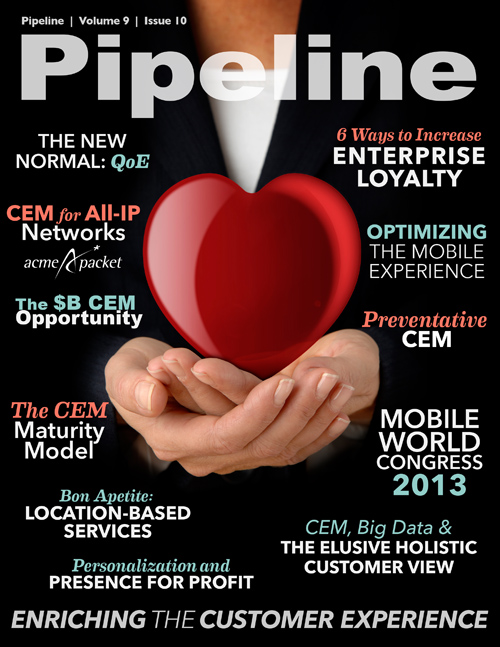Customers Are Hungry for Location-Based Services
By: Becky Bracken

It was only a matter of time. Smartphone users who once recoiled at the idea of having their current location disclosed now flick their tiny screens and expect to be told exactly where they are on a map, not to mention what time it is, what the weekend forecast looks like and where to get the best tapas in a particular neighborhood. Times have changed, and the appetite for location-based services (LBS) is becoming ravenous.
LBS revenues are on track to grow more than 20 percent in Europe and more than 9 percent in North America by 2017, according to Berg Insight in a February research report. An estimated 40 percent of all mobile subscribers in Europe use an LBS-enhanced application on a regular basis, while in North America, which has a larger number of GPS-enabled handsets and smartphones, about half of all subscribers use LBS monthly.
Local search, social networking and navigation are the top services in terms of active users, but mobile workforce management services that aim to improve operational efficiency for businesses are also gaining traction in new industry segments.
Smartphones are “the most important enabler for LBS adoption in general,” said André Malm, senior analyst with Berg Insight. “The installed base of smartphones in Europe has now reached 45 percent of total handsets and already surpassed 55 percent in North America,” but “mobile operators still play a more central role in North America than in Europe,” marketing their services to both the consumer and enterprise-customer segments.
Location-based advertising
Location-based advertising (LBA), long touted as the revenue-generating magic bullet of the future for mobile operators, has been slow in coming. The industry as a whole has contemplated the promise of mobile couponing and targeted, location-based marketing, but there wasn’t much momentum behind either until recently, when some of the first real-world, location-based success stories started to make the rounds. One example is Quiznos and Sense Networks, which tested a mobile coupon campaign with success.
Late last year Sense Networks placed mobile ads for Quiznos on the devices of individuals between the ages of 18 and 34 who’d visited similar restaurants, such as Subway or Jimmy John’s, over the past 30 days, and who were located within a three-mile radius of a Quiznos in the Portland, Ore., market. By year’s end the restaurant chain had racked up nearly 3.7 million new impressions and witnessed a 20 percent boost in coupon redemption within the Portland area when compared with similar nationwide campaigns.
“We are extremely excited about this recently completed campaign with Quiznos,” said David Petersen, CEO of Sense Networks. “We are continuously amazed at how much value brands such as Quiznos receive from well-targeted mobile advertising. Today’s consumer is constantly on the move, and the ability to identify and target users based on the behavior our technology extracts from location data is invaluable. Marketers and businesses alike will continue to utilize mobile, location-based data-processing platforms so that they can provide consumers with the most relevant and timely mobile advertisements.”




















